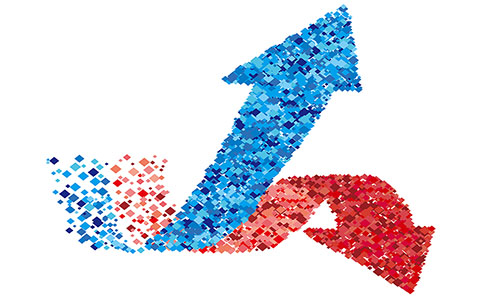Reconsidering the Age of Abundance
Want more free featured content?
Subscribe to Insights in Brief

Techno-optimists have long claimed that a forthcoming age of abundance will solve many of society's problems. Indeed, in the 2012 book Abundance: The Future Is Better Than You Think, entrepreneur, futurist, and Singularity Education Group cofounder Dr. Peter Diamandis and journalist and entrepreneur Steven Kotler argue that humanity is stepping into a radical-transformation period during which technology has the potential to improve basic living standards for every human on Earth and that goods and services once accessible to only the wealthy few will in a single generation become available to any person who needs or wants them.
As Europe entered a harsh winter of significantly inflated prices for energy and food at the end of 2022, French President Emmanuel Macron gave a speech in which he declared "the end of abundance," saying that "what we are currently living through is a kind of major tipping point or a great upheaval...we are living the end of what could have seemed an era of abundance...the end of the abundance of products of technologies that seemed always available...the end of the abundance of land and materials including water" ("Macron warns of 'end of abundance' as France faces difficult winter," Guardian, 24 August 2022; online).
If the golden age of abundance is still coming, it has its work cut out. Abundant cheap capital appears unlikely to return anytime soon, digital abundance has led to an abundance of misinformation, and—most problematic of all—economic growth still seems intertwined with worsening climate change. At the same time, the negative effects of scarcity remain all too real. Poverty still causes starvation in the developing world. Even in the developed world, poorer consumers struggle to afford basic essentials. Looking forward, significant concern exists about the impact that worsening climate change will have on the availability of food and clean water.
Although scarcity creates challenges, ecologists (as well as some mainstream business leaders, financiers, and regulators) now question the basic tenets of abundance: that constant growth is possible and that more is always better. The concepts of finite resources, sustainability, and even degrowth are increasingly on the agenda. Efforts are underway to adjust the capitalist model to meet sustainability needs (see SoC1355 — A New Model for Capitalism?). The circular-economy concept and the common environmental mantra "reduce, reuse, recycle" are in direct contradiction with abundance as a goal.
In many areas, technological progress has failed to lead to abundance. Indeed, scarcity still largely characterizes energy, materials, and biotech—areas that have shown the potential for abundance but have not yet realized it. In materials, 3D printing and synthetic materials have shown promise, but scarcity still dominates the materials industry, with issues of access to key minerals causing major problems in supply chains. In biology, synthetic biology has led to remarkable health-care breakthroughs and the beginnings of regenerative medicine; however, few people would argue that society can yet treat human health as anything but a precious, scarce resource.
Perhaps the area in which the promise and the reality of abundance are in starkest contrast is energy. Theoretically, renewables offer abundant and low-cost energy. In practice, the energy transition takes significant time and investment and contributes to energy-scarcity issues and price volatility during the transition period. For example, until the phaseout of fossil fuels is complete, producers need to manage supply carefully to avoid finding themselves with stranded assets.
The digital world has delivered on abundance and is perhaps the best evidence of an age of abundance so far. Some of this abundance is now so ingrained in society that few people stop to think about it. Indeed, for many people today, maintaining hundreds or perhaps thousands of social connections, checking essentially any fact, and accessing entire music catalogs from a handheld device is unremarkable. But the problems of this digital abundance are also clear. Misinformation is widespread, and automated bots often spread it. Children have access to vast databases of hard-core pornography. People express concern about social-media and gaming addiction and about a more general state of digital distraction.
Digital abundance looks set to accelerate. Generative AI promises truly abundant content, as automated content-creation tools remove human limits. On the plus side, abundant content could dramatically improve the productivity of content professionals, lawyers, educators, and other workers who need to create digital materials. On the minus side, generative AI could lead to an unlimited supply of highly believable and widely disseminated false or harmful content (state actors may fund the creation and spread of this content). Plausibly, such content could flood social-media channels and make identifying true information difficult for many people.
At least for now, the vision of the age of abundance remains just a vision. Scarcity more than abundance still characterizes most areas of society, and the one area of true abundance—digital life—has brought not only benefits but also problems. Perhaps the age of abundance is still coming. For example, nuclear-fusion, regenerative-medicine, food‑3D-printing, and other abundance-enabling technologies do show promise. But more likely is that the concept of the age of abundance has reached the end of its shelf life. Societies certainly benefit from adequate access to food, water, shelter, and other essentials; however, abundance in all areas seems a mixed blessing, as digital abundance demonstrates. Moreover, the idea that technological progress, political leadership, and economics will align perfectly to remove and then reverse the constraints that accelerating climate change places on societies seems misplaced.